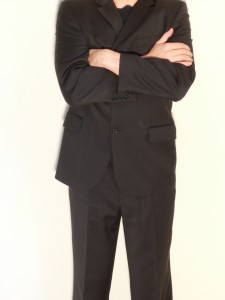I’ve taught many workshops and coached more leaders than I can count on effective communication. One of the most important lessons that continues to manifest is that it is not what you say that matters, but how you say it. Here are 3 lessons that help you say what you mean with more than your words.
A study by Dr Mehrabian investigated the impact when words and other communication were not consistent. Findings showed that only 7% of the message people received was dependent on the words you use. 38% reflected tone of voice and 55% facial expression or body language. It’s important that you know how your tone and appearance affect how people perceive your message. Their perception is reality.
Tone matters.
Think about the sentence:
I didn’t say he stole the money.
What did it mean when you read it? Now read it with emphasis on different words and imagine how it changes the meaning:
I didn’t say he stole the money
I didn’t say he stole the money
I didn’t say he stole the money
I didn’t say he stole the money
I didn’t say he stole the money
The word “Oh” is the same way. If you have a mother like mine, you’ve probably heard the “Oh” that obviously means that what you’ve written / worn / said / done is not something she approves of. My mother is a master of this.
It’s easy to see how tone can be misunderstood when communicating in writing through emails or texts. People perceive your tone based on their own perspective.
My advice: When possible, communicate in person or verbally, and make sure your tone is consistent with what you’re saying. If there’s a chance the tone was misunderstood, pick up the phone or go see the person. Emails or tweets back and forth do not lead to a productive dialogue.
Body language speaks louder than words.
A few years ago, while I was teaching a course on coaching employees, the impact of body language became extremely evident during a roleplaying exercise. As I watched the interaction between two managers, I saw that they were saying the right things (asking open-ended questions, ensuring the feedback was behavioural and not personal), but their body language was very distinct. I waited until we were debriefing the activity to see how they felt about their roleplay.
Not surprisingly, one of the managers said she felt intimidated and that she got the impression that her partner wasn’t truly listening to her when roleplaying. The body language that created this feeling was a subtle shift in the second manager’s body positioning. When he spoke or asked a question, he leaned forward, and when she responded, he leaned back in his chair and crossed his arms. When I pointed it out, he was shocked.
Later in the workshop, he adjusted his body language in further roleplays, and received much more positive reaction. Months later, he commented to me that that simple, unambiguous behaviour change had made a huge impact on the effect his coaching had.
My advice – pay attention to how you stand, sit, hold your arms, during various forms of communication. Watch people’s reactions. Note how you were “holding” yourself when people respond positively to you, and continue that. When in doubt, watch for subtle changes in the other person’s body language and “mirror” them. For example, if they lean back, perhaps you’re leaning too aggressively forward. Lean back yourself. Different people will respond differently, so be prepared to flex your body language accordingly.
More letters is not more communication.
This is a tough problem, because I think that through writing essays and papers in university, students are often commended for using grandiose words and explaingin their case in multiple ways. In business, however, this is often counter-productive. In a world where communication floods our email, social feeds, and work life, brevity is critical. So my advice is don’t use a big word where a small word will do. Say what you mean, in fewer words where possible. Here’s an example from urban dictionary:
Using gargantuan idioms to fabricate intelligence
Translated, becomes:
Using big words to sound smart
Which would you rather hear or read?
My advice: Use words that are clear and understandable. Think about your audience. CEOs don’t have time to read long, drawn out accounts of information presented multiple ways. Focus on the most relevant points, and communicate with impact.
There are a ton of approaches to communicating effectively, and they change depending on your audience and medium. I’d love to hear your thoughts about what I’ve described and advised above
I love helping leaders communicate more effectively. If you or your leadership team could benefit from training or coaching in communication, contact me to discuss!


